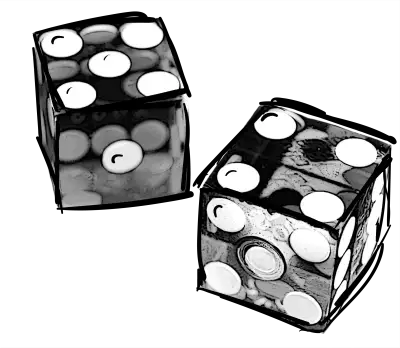
Exactly who does your brand think it is?
I’m going to hold your hand when I say this: having an existential crisis is a good thing.
It’s where growth comes from. It’s how you progress. It encourages the kind of soul searching that makes you the best version of yourself.
The same goes for brands. An existential crisis is a healthy, key phase of development.
At some point your brand needs to ask itself: Who am I? Who do I want to be? What do I have to say? How do I want to say it?
Is your brand voice sarcastic, informal and quippy?
Romantic, poetic and ethereal?
Playful, wholesome and family-friendly?
And beyond how it sounds, what’s your brand’s ultimate goal? What does it stand for? What core attributes define it?
When you’ve developed a consistent brand tone and identity, it creates a feeling of recognition and trust with your audience. A distinct personality humanizes your brand beyond the corporate or technical mumbo jumbo that tends to go in one ear and out the other.
Without a clear sense of voice and identity, your brand is just another face in the crowd, saying all the same things in all the same ways. But when it speaks with intention—when it tells a story—that’s when it moves people, sticks with them and makes them engage. And you can’t tell a cohesive story without knowing who your main character (AKA, your brand) is.
Now, we know developing an entire persona can feel a little overwhelming. That’s where we come in.
How to get started
There’s not really a right or wrong way to uncover who your brand wants to be. But here’s a peek behind the curtain at how we do it in the barn.
First, we start by defining a brand’s keywords.
These can be adjectives, verbs, nouns, onomatopoeias… Anything that speaks to a core component of a brand’s identity, message and overall vibe.
Ask yourself: What sets your business apart? How do you want your product or service to make audiences feel? Who is your target audience? What’s your brand’s purpose? What’s its essence?
Then: open the floodgates. Throw spaghetti at the wall. Leave it all on the dance floor. Write down every word that comes to mind.
Once you have your “mind map” written down, start going through and crossing out words that are too repetitive, feel out of place or seem a touch off-brand upon further reflection. As you’re doing this, you should also take note of the strongest words, the ones that speak to the heart of how you see your brand.
These words have the potential to become your brand pillars: 3–4 overarching, foundational words (with meanings that don’t overlap too much in similarity) summarizing your brand’s identity.
To put that into practice, if we were doing the brand pillars for Nike, they may be something like: inspiration, grit and legacy.
These are core pieces of Nike’s identity that other keywords can live under. For instance, words that could go under grit: sweat, dedication, resilience, etc.
Once you have your core brand pillars, sort the rest of the keywords under the appropriate sections. Feel free to let words live in multiple columns if you can’t decide which brand pillar they most align with—we’re not into strict rules here.
These pillars and keywords are now your North Star, guiding your brand in the right creative direction. Learn them, live them, love them.
How do you keep evolving your brand?
Now that you have your brand words, it’s time to send your brand into the world, ready to share its story. But over time, how do you keep your audience engaged? How do you strike a balance between fresh ideas without sacrificing brand consistency? Your brand obviously needs to stay your brand, but how do you avoid becoming redundant and stale? Let’s get into it.
As an example, we’ll stick with the aforementioned darling of the advertising world: Nike. During the 2025 Super Bowl, Nike launched a commercial featuring professional female athletes, called “So Win.” This ad featured epic moments in women’s sports, paired with a voiceover from these athletes detailing how they persisted in the face of doubtful, dismissive and sexist comments.
Pretty high-level stuff.
In contrast, just a few months prior, in September 2024, Nike launched its “Winning Isn’t Comfortable” campaign. One of the most popular ads featured regular people running despite undesirable and inconvenient conditions in their daily lives. No Olympic medals, no cheering crowds, no publicly shattered glass ceiling.
But those runners conveyed the same sense of determination and inspiration. They suffered the same sweat stains, aching lungs and sore muscles for the sake of a sport they’re passionate about.
The scale of the story is different, the scenery is different, the subject matter is different, but the feeling is inherently Nike.
With each new idea you have, reflect on your brand pillars and ask yourself: Does this align with how I’ve defined my brand? Are there new elements of my brand I want to explore? Are any of my keywords sparking fresh ideas?
It’s just like the main character unlocking new facets of themselves as they go on the classic hero's journey. They don't become completely different human beings, but they grow and evolve. They find new ways to show bravery, intelligence and boldness—to show who they are.
How many ways can you show who your brand is?




